Turning Turned On End
Inverted-spindle vertical turning machines take on horizontal chuckers for turning cell applications.
Share




Imagine taking a CNC horizontal chucker lathe and standing it on end, spindle end up. Several lathe builders have done essentially that. They call the configuration an inverted vertical turning machine or an inverted-spindle vertical lathe, and they expect it to challenge the horizontal chucker in a substantial number of small-, medium- and large-batch automation applications.
The drawing shows most of the features of an inverted-spindle lathe. First, there's the inverted spindle, which moves in both the X and Z axes. The lathe is equipped with a multiple-part conveyor system outside the machining area that delivers discrete blanks or near-net-shape parts to a pick-up station. And here's the revolutionary feature: the lathe spindle travels in X from the machining area to the pick-up station, picks up the blank, takes it back to the machining area and presents it to a fixed tool turret for machining.
When the machining is completed, the spindle returns the finished part to the pick-up station, the conveyor advances to move the next blank to the pick-up station, and the cycle repeats. The process continues until all of the blanks on the conveyor have been machined.
The operator's role is reduced to loading blanks on the conveyor and removing finished parts. Movement of the parts in and out of the machining area, and of course the machining, occur behind closed doors. In fact, the only time the doors to the machining area need to be opened is during setup changes.
The genius of the inverted spindle lathe is that the spindle doubles as the workpiece loader/unloader. With its parts conveyor, the inverted spindle lathe functions as a largely unmanned turning cell, without the need for the robot or gantry loader essential to the horizontal chucker turning cell. The user avoids not only the cost of a separate loader but also the space requirement; three or four inverted spindle lathes can be accommodated in the space typically required for two conventional turning cells.
Compact machine design makes for short travel distances, which make for fast cycle times. One builder boasts a part-to-part time (from end of machining on one part to start of machining on the next part) of 4.5 to 6.5 seconds. During that interval, the machine spindle comes to a stop after machining the first part and returns the machined part to the pick-up station, the conveyor indexes to the next blank, the spindle picks up the blank and takes it to the machining area, and machining resumes.
A Machine For Every Need
Whether you're a small job shop or a large manufacturer, there's an inverted spindle lathe ideally suited to your needs. The Hardinge-Emag VL3 inverted-spindle vertical CNC lathe is built in Germany by Hardinge-Emag GmbH, a joint venture between Emag Maschinenfabrik and Hardinge Inc. (Elmira, New York). The VL has a 21-hp spindle drive that delivers spindle speeds up to 7,500 rpm. It has a 12-station VDI 40 turret with bi-directional indexing. Live tooling at all stations is optional. Traverse rates are 2,362 ipm and 1,181 ipm in X and Z respectively.
The VL's integral, circular, parts conveyor can accommodate 20 parts up to 3.1 inches in diameter or 14 parts up to 5.1 inches. Blanks are placed in positioning guides on the conveyor (and machined parts are removed) at the front of the machine. The operator punches the diameter of the parts being run into the control, and the control automatically advances or retards the positions of the guides on the conveyor to center the parts at the precise position for capture by the spindle at the pick-up station.
Parts travel on the conveyor to the pick-up station located behind the machining area. The pick-up station has a floating base that can tilt in any direction; if the part arrives at the station slightly skewed, the floating base tilts in response to the downward pressure of the chuck jaws so that the part squares up. (See drawing.) If for some reason—a wrong part, an inverted part and so on—the part fails to load properly, the base tilts the part away from the chuck to avoid a crash. The spindle retracts to a position predetermined by the program, and the conveyor advances to the next station, continuing the cycle.
The S-series of inverted vertical turning cells offered by Hitachi Seiki U.S.A., Inc. (now handled by Mori Seiki HITECH, Dallas, Texas) gives the buyer a large selection of lathe sizes. Models range from the CS15, a two-axis machine with a 10-hp, 6,000-rpm spindle, a 12-station turret (live tooling optional) and an integral, rotary part-indexing table that can accommodate eight parts up to 4 inches in diameter, to the CS40, a two-axis machine with a 50-hp, 2,000-rpm spindle, a 12-station tool turret (live tooling optional) and a variety of part conveyor packages that will handle parts up to 24.4 inches in diameter.
The line's CS20Y model offers Y- and C-axis motions in addition to X and Z. Its 12-station VDI turret provides ample rotating-tool power (5 hp) and speed (3,000 rpm), making the machine useful for turned parts requiring extensive milling and drilling operations.
The CS20Y is available with several parts feeder options. They range from a small-batch, economy-type, integral, indexing turntable capable of holding eight parts up to 6 inches in diameter, to an in-line conveyor with 14, 20 or 26 stations capable of holding parts up to 8 inches in diameter by 6 inches long and weighing 44 pounds. The parts feeder is enclosed in a housing at the side of the machine. The spindle zips to the right to pick up a blank from the conveyor's loading station and then zips back to present the blank to the tool turret.
Although we've looked at one-machine/one-feeder combinations thus far, it should be obvious that the spindle-loading feature of the inverted-spindle vertical CNC lathe readily accommodates multiple-machine installations for high-volume production. The fast-cycle-time machines can be joined with simple part conveyors to create flexible transfer lines that can be easily relocated or reconfigured depending on production requirements.
One of the most impressive features of the inverted-spindle vertical CNC lathe is its adaptability to most machining requirements. For example, if you are more interested in machining the part complete on one machine rather than moving the part from machine to machine, you'll appreciate Hitachi Seiki's CS25W twin-inverted-spindle turning cell. The machine incorporates two inverted spindles on a common frame. The first spindle removes a blank from the pick-up station of the parts feeder and presents it to its 12-station tool turret for machining of one side. The blank is then turned over within the machine, and the second spindle and turret handle machine the reverse side. Finally, the second spindle places the completely machined part on the exit conveyor, ready for downstream processing.
Need Tooling? No Problem
Flexibility of the inverted-spindle vertical CNC lathe extends to tooling as well. Index Corp. (Shelton, Connecticut) provides a comprehensive offering of standard and optional tooling on its VerticalLine inverted-spindle vertical turning machines intended for demanding turning/milling applications. In addition to the fixed turret standard on most inverted-spindle lathes, Index offers some interesting options. A tool table mounted behind the spindle provides up to six stations for stationary or live tools. The table also provides a convenient place for mounting equipment for special operations, such as laser welding, heat treating and the like, that may not be mountable on the turret.
The tool table can be installed instead of the machine's standard 14-station turret and equipped with gang-style tooling for turning, boring, reaming and threading operations. It will even accommodate long boring bars, milling spindles...even multispindle drill heads. Large special attachments such as high-frequency spindles or polygon-generating units can also be installed.
Need still more tools? You can add a second turret to augment the first turret and tool table. Index explains that requirements for specialty tools for producing a fine finish, engraving, knurling and so forth can quickly exceed the number of tooling stations available. The second turret provides the capacity needed for the most tool-demanding parts. There's another benefit: the spindle can present the workpiece to one turret while the other turret is indexing for additional cycle time reduction.
Adding Up The Advantages
Mark Leeser, vice president-general manager for Hitachi Seiki, explains why he thinks the inverted-spindle vertical CNC lathe will eventually capture a significant share of the CNC chucker market: "The inverted-spindle machine has a very small footprint for its chuck size and work envelope," he begins. "As a result, three or four machines will fit in space required for two horizontal chuckers equipped with robots or gantry loaders. That's important for firms that need to increase capacity within existing plant space. It's a more-parts-per-square-foot consideration.
"The inverted-spindle machine makes it easier for a shop to install an automated turning cell by eliminating the need for a robot or a gantry loader," he continues. "Not only does the shop save the initial cost of the robot, but it also avoids having to program the robot, design and make grippers for the robot, and so forth. And once the automated cell is in place, it will deliver a significant increase in productivity. The operator of a horizontal CNC chucker takes a break, goes to lunch, gets tired, comes in late, doesn't come in at all... parts don't get made and jobs fall behind schedule. By contrast, the inverted-spindle lathe is completely automated. As long as the feeder is stocked with blanks, the cell will turn out finished parts during breaks, during lunch hours, overnight, during holidays...the productivity gains can be dramatic.
"Taking everything into consideration, the inverted-spindle machine costs about 30 percent less than a horizontal CNC chucker with a robot, so the shop owner is saving money and floor space and getting that dramatic boost in productivity," Mr. Leeser continues. "We expect that a number of firms are going to discover the advantages of these inverted-spindle machines and that, down the road, they will account for about 20 percent of the market." Mr. Leeser adds that the machines have been in use in Europe for several years, and that approximately 80 percent of the machines are used by larger firms such as first- and second-tier suppliers to the automotive industry, and the rest are used by smaller job shops. He expects to see the same usage pattern in the United States. He stresses that the inverted-spindle CNC chucker can be used advantageously to produce part quantities ranging from 50 to 10,000 pieces.
"Labor savings is another important advantage," adds Brian Ferguson, product manager for Hardinge's VL inverted-spindle vertical lathes. "One operator can easily tend to two or three machines and still have time to perform other tasks. Then, too, finding skilled shop people isn't getting any easier, and machines like our VLs enable the shop owner to make better use of his or her best people."
Is inverted turning a brand new development? "Since the early '90s, inverted-spindle configurations have been used in high-volume, dedicated applications, for example, a transfer line for an automotive part," Mr. Ferguson notes. The real significance of the inverted-spindle machines currently being introduced is that they are standard configurations, and their automation advantages are available today on a machine that anyone can buy."
Related Content
CNC Machine Shop Honored for Automation, Machine Monitoring
From cobots to machine monitoring, this Top Shop honoree shows that machining technology is about more than the machine tool.
Read MoreIndustry Analysis: Machining Semiconductor Components
With many machine shops anticipating long-term growth in demand from the semiconductor industry, it is worth the time to heed the advice of manufacturers who have already been servicing this end-market for years.
Read More4 Commonly Misapplied CNC Features
Misapplication of these important CNC features will result in wasted time, wasted or duplicated effort and/or wasted material.
Read MoreTop Shops: Designing a Shop to Meet Customer Needs
Working closely with customers and making careful investments has enabled this Wisconsin machine shop to tackle difficult jobs with tight deadlines as a core part of its business.
Read MoreRead Next
Registration Now Open for the Precision Machining Technology Show (PMTS) 2025
The precision machining industry’s premier event returns to Cleveland, OH, April 1-3.
Read MoreSetting Up the Building Blocks for a Digital Factory
Woodward Inc. spent over a year developing an API to connect machines to its digital factory. Caron Engineering’s MiConnect has cut most of this process while also granting the shop greater access to machine information.
Read MoreBuilding Out a Foundation for Student Machinists
Autodesk and Haas have teamed up to produce an introductory course for students that covers the basics of CAD, CAM and CNC while providing them with a portfolio part.
Read More












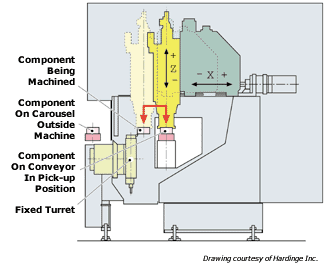
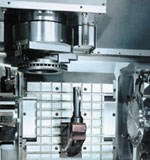
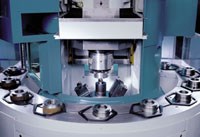
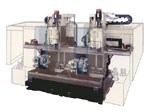

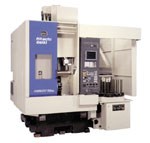



.jpg;maxWidth=300;quality=90)

.jpg;maxWidth=300;quality=90)












